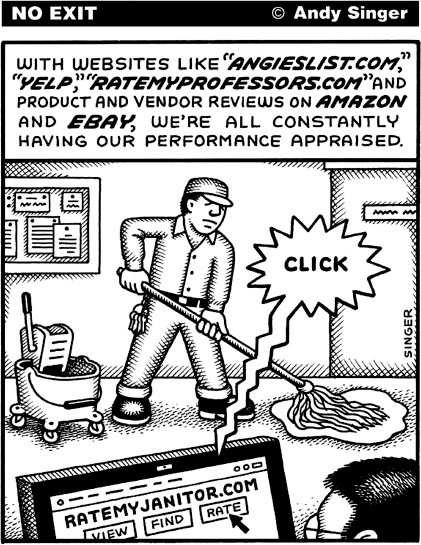Finding and developing materials
Finding and developing materials
develop criteria
When you are assigned a review, investigate your subject thoroughly. Online research is easy: To figure out what others are thinking, just type the name of whatever you are evaluating into a browser, followed by the word review or critic. (refine your search) Read what you find critically and carefully, giving close attention to reviews from reputable sources. But don’t just repeat the opinions you turn up. Feel free to challenge prevailing views whenever you can make a better argument or offer a fresh perspective. To do that, focus on criteria and evidence.
Decide on your criteria. Clarify your standards, even if you’re just evaluating pizza. Should the crust be hard or soft? Should the sauce be red and spicy, or white and creamy? How thick should the pizza be? How salty? And, for all these opinions — why?
Didn’t expect the why? You really don’t have a criterion until you attach a plausible reason to it. (develop a statement) The rationale should be clear in your own mind even if you don’t expect to explain it in the review or evaluation itself: Great pizza comes with a soft crust that wraps each bite and topping in a floury texture that merges the contrasting flavors. More important, any criterion you use will have to make sense to readers either on its own (Public art should be beautiful) or after you’ve explained and defended it (Public art should be scandalous because people need to be jolted out of conformist thinking).
Look for hard criteria. You’ll seem objective when your criteria at least seem grounded in numbers or corroborated observations. Think, for example, of how instructors set measurable standards for your performance in their courses, translating all sorts of activities, from papers to class participation, into numbers. Teachers aren’t alone in deferring to numbers. CNET Reviews, for instance, relies heavily on precise measurements in evaluating televisions and explains those criteria in excruciating detail on its Web site. The following is how CNET assesses just one aspect of an HDTV’s performance:
Black luminance (0%) Example result: 0.0140
This is the measure of the luminance of “black” in fL (footlamberts), and a lower number is better. It’s often referred to as MLL, for minimum luminance level, but since this measurement is taken post-
Good: +/− less than 0.009
Average: +/− 0.009 to 0.019
Poor: +/− 0.02 or higher
Got that? Probably not, but aren’t you now inclined to take a CNET product review seriously?
Argue for criteria that can’t be measured. How do you measure the success or failure of something that can’t be objectively calculated — a student dance recital, Bruno Mars’s latest track, or the new abstract sculpture just hauled onto campus? Look into how such topics are evaluated and discussed in public media. Get familiar with what sensible critics have to say about whatever you’re evaluating and how they say it — whether it’s contemporary art, fine saddles, good teaching, or successful foreign policy. If you read carefully, you’ll find values and criteria embedded in all your sources. (read closely)
In the following excerpt, for example, James Morris explains why he believes American television is often better than Hollywood films. Morris’s implied criteria are highlighted.
What I admire most about these shows, and most deplore about contemporary movies, is the quality of the scripts. The TV series are devised and written by smart people who seem to be allowed to let their intelligence show . Yes, the individual and ensemble performances on several of the series are superb, but would the actors be as good as they are if they were miming the action? TV shows are designed for the small screen and cannot rely , as movies do, on visual and aural effects to distract audiences. If what’s being said on TV isn’t interesting , why bother to watch? Television is rigorous , right down to the confinement of hour or half-
— “My Favorite Wasteland,” Wilson Quarterly, Autumn 2005
Stated directly, Morris’s criteria might sound like this: Good entertainment is intelligent; it is tailored to its medium; it does not require special effects to keep people interested; it is disciplined.
Stand by your values. Make sure you define criteria that apply to more than just the case you are examining at the moment. Think about what makes socially conscious rap music, world-
Gather your evidence. Some materials for a review will necessarily come from secondary sources. Before judging the merits of Obamacare or Truman’s decision to drop atomic bombs to end World War II, expect to do a lot of critical reading in a range of sources. Then weigh the evidence before offering your opinion — being sure to credit those sources in your review. (read closely)
Other evidence will come from shrewd observation. Sometimes you just need to be attuned to the world around you — as Jordyn Brown is in cataloging the rudeness of cell phone users. When reviewing a book, a movie, a restaurant, or a similar item, take notes. If appropriate, measure, weigh, photograph, or interview your subjects. (Does that gut-

Andy Singer.